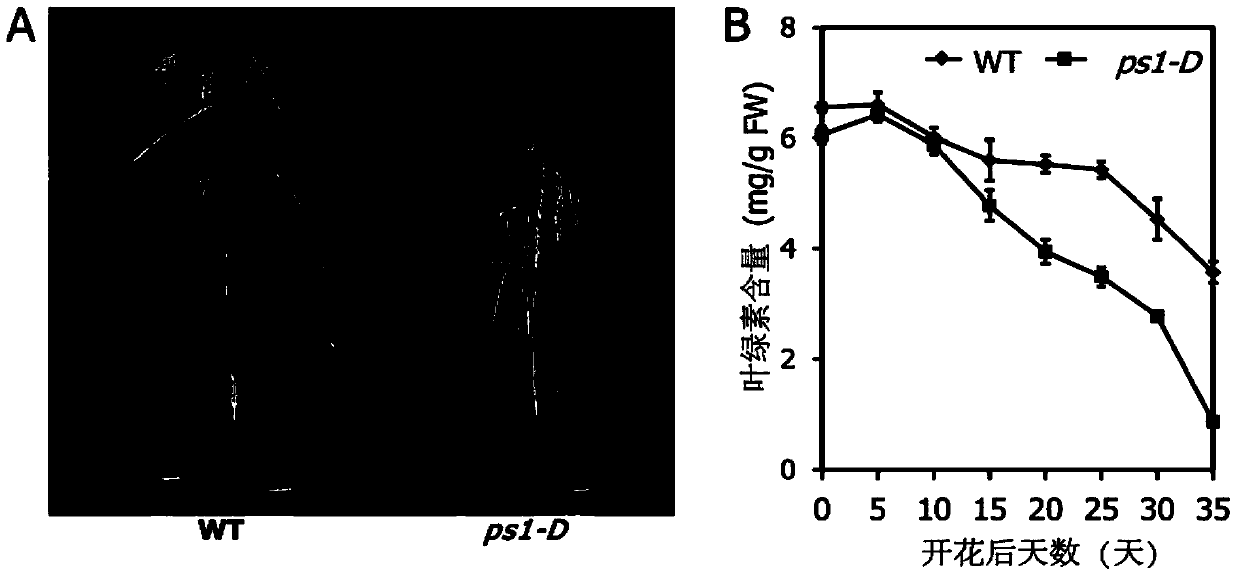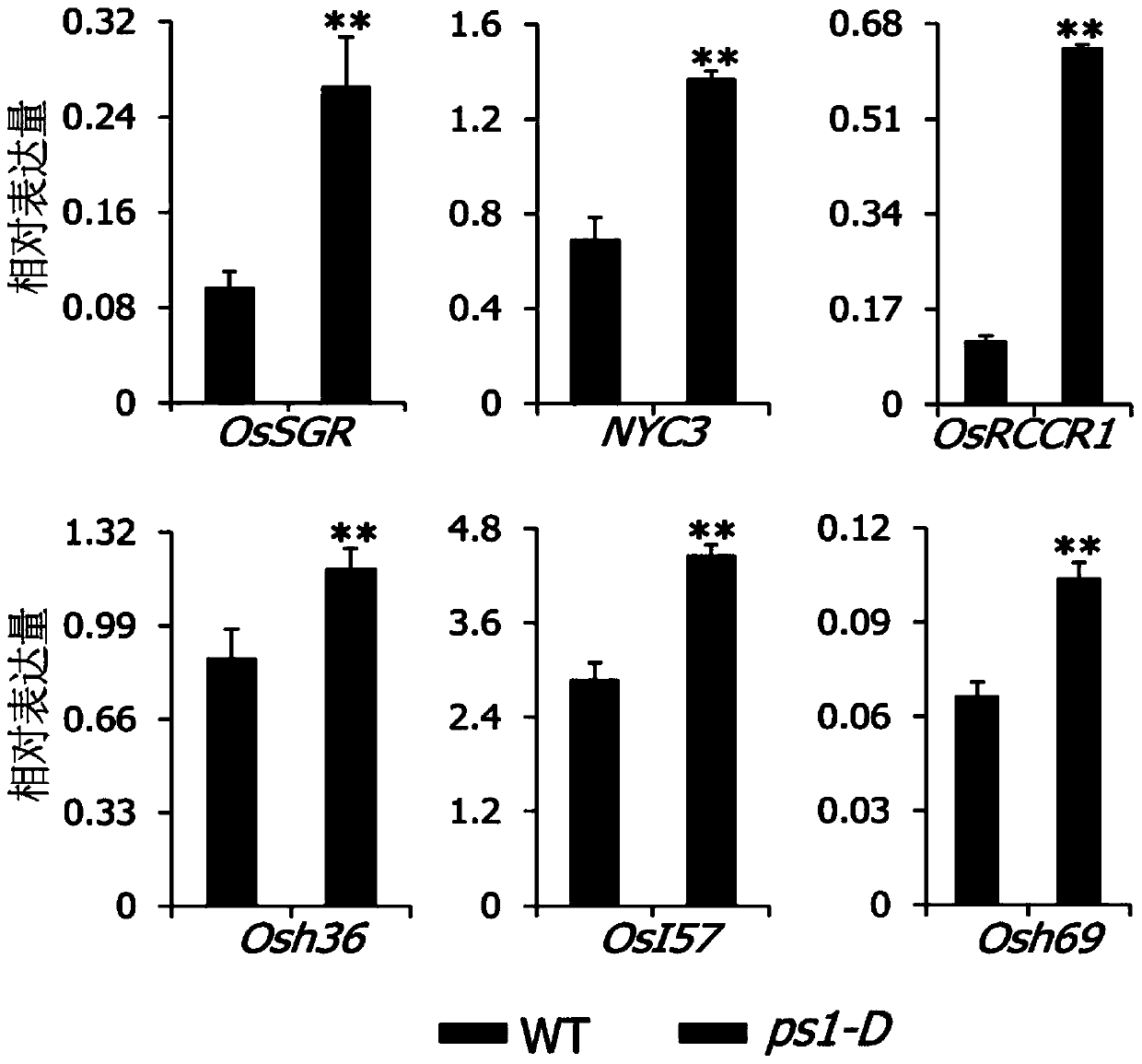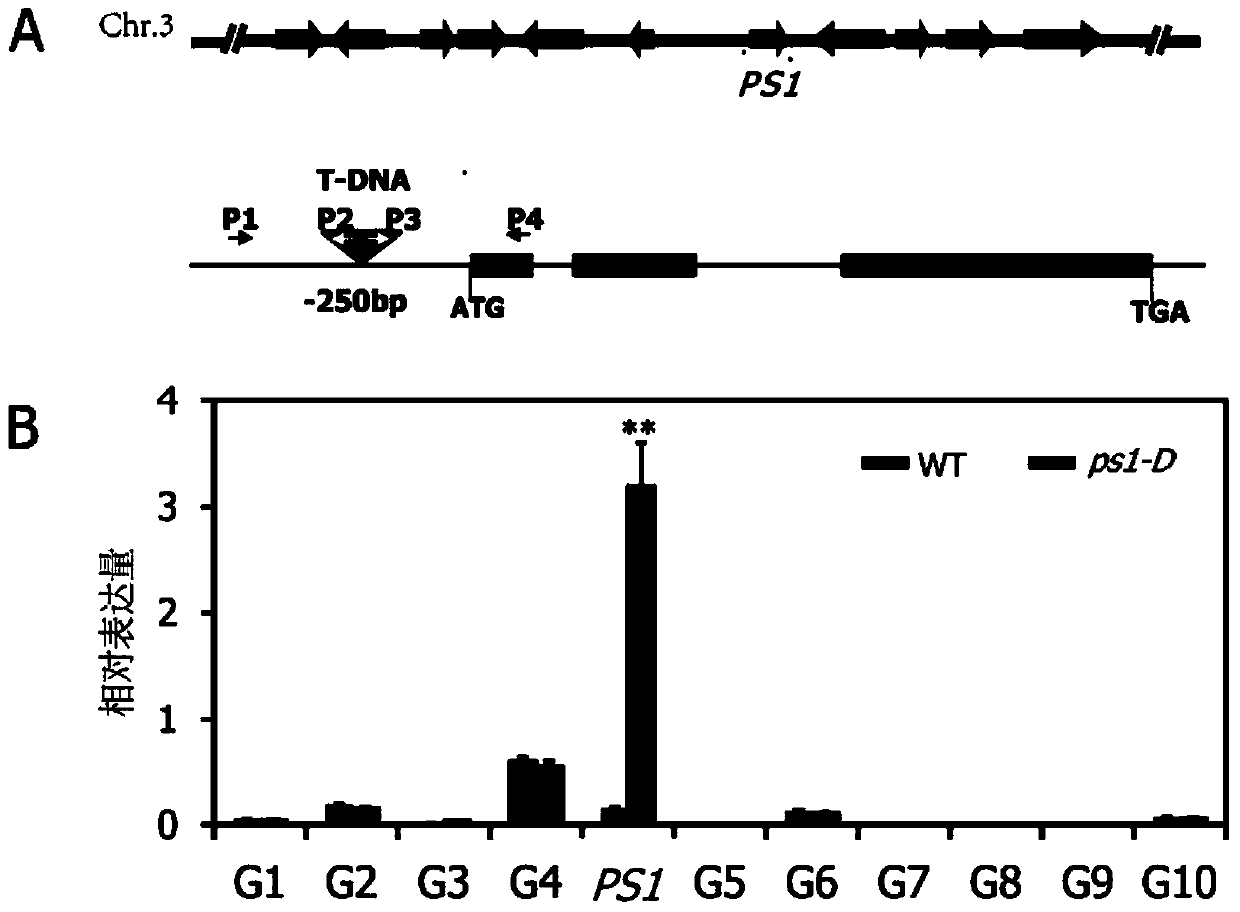Application of rice PS1 protein and rice PS1 protein coding gene in adjustment of plant senescence
A technique for encoding genes and transgenic plants, which is applied in the application field of rice PS1 protein and its encoding genes in regulating plant senescence, and can solve problems such as the lack of unified understanding of leaf senescence ideas and methodologies, the cloning and research lag of key genes of leaf senescence, etc.
- Summary
- Abstract
- Description
- Claims
- Application Information
AI Technical Summary
Problems solved by technology
Method used
Image
Examples
Embodiment 1
[0065] Example 1. Obtaining PS1 protein related to plant senescence and its coding gene
[0066] 1. Mutant acquisition and phenotype
[0067] A premature senescence mutant was found from the rice mutant library (from the Institute of Genetics and Developmental Biology, Chinese Academy of Sciences). Compared with the wild type, the mutant phenotype has obvious premature aging phenotype, and the phenotype of the mutant is as follows figure 1 Shown in A. Wherein, WT is wild-type rice, and ps1-D is the mutant rice obtained from the above screening. There is almost no difference between the mutant rice seedling stage and the wild type. With the progress of development, the aging of the old leaves accelerated after entering the tillering stage. Compared with the wild type, the older leaves were more prematurely senescent, and the chlorophyll content was relatively lower. After entering the filling stage, the aging phenotype was further intensified. Take the sword leaf as an exa...
Embodiment 2
[0082] Example 2, PS1 gene positively regulates rice senescence
[0083] 1. Expression of PS1 gene in different tissues
[0084] Different organs or tissues of the wild-type rice (Oryza.sativa L.) variety Nipponbare, as well as samples of the same organ at different stages, were extracted for RNA analysis of PS1 gene tissue expression characteristics, specific detection methods, data processing, internal reference primer sequences and PS1 gene The detection primer sequence was the same as in Example 1, and the experiment was repeated three times. The expression of PS1 gene in different organs or tissues, and in the same organ in different periods is as follows: Figure 4 As shown, the vertical axis represents the ratio of the expression levels of PS1 gene and ACTIN1 gene in various organs and tissues. in, Figure 4 Middle A is the expression of PS1 gene in root, stem, leaf, leaf sheath, young ear and endosperm, Figure 4 Middle B is the expression of PS1 gene in different ...
Embodiment 3
[0094] Example 3, Obtaining and functional identification of PS1 overexpressed rice
[0095] The gene involved in this example is the PS1 gene obtained in Example 1 from rice (Oryza. (named PS1 protein). Sequence 1 consists of 1179 nucleotides, and Sequence 2 consists of 392 amino acids.
[0096] 1. Obtaining of PS1 overexpressed rice
[0097] 1. Construction of recombinant expression vector pCAMBIA2300-Actin-PS1
[0098] (1) Extraction of rice total RNA and acquisition of cDNA
[0099] Rice total RNA was extracted using the Trizol reagent method (Invitrogen). The specific process is as follows: put 1-2g leaves of rice (Oryza.sativa L.) variety Nipponbare in a pre-cooled mortar, quickly grind them into powder with liquid nitrogen, and weigh 0.2g to 2ml of liquid nitrogen pre-cooled In a centrifuge tube; add 1ml Trizol reagent to each tube, mix well, add 200μl chloroform, shake on a vortex shaker for 1min, let stand at room temperature for 10min, then centrifuge at 12,000r...
PUM
 Login to View More
Login to View More Abstract
Description
Claims
Application Information
 Login to View More
Login to View More - R&D
- Intellectual Property
- Life Sciences
- Materials
- Tech Scout
- Unparalleled Data Quality
- Higher Quality Content
- 60% Fewer Hallucinations
Browse by: Latest US Patents, China's latest patents, Technical Efficacy Thesaurus, Application Domain, Technology Topic, Popular Technical Reports.
© 2025 PatSnap. All rights reserved.Legal|Privacy policy|Modern Slavery Act Transparency Statement|Sitemap|About US| Contact US: help@patsnap.com



